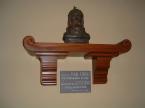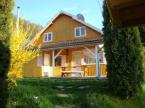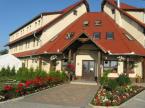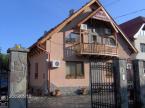Information
WIKI REFRESH Târgu-Mureş (pronunciation in Romanian:
- name in Hungarian: Marosvásárhely, also known as Vásárhely; German: Neumarkt am Mieresch) is a city in Mureş county, Transylvania, Romania. An alternative Romanian spelling of its name is Tîrgu-Mureş.
Population
According to the results of the last census of 2002, the municipality of Târgu Mureş has 150,041 inhabitants. This is the first census to show Hungarians in a minority, following decades of migration of Romanians into the city.
Ethnic composition:
- Romanians – 75,533 (50.34%)
- Hungarians – 70,110 (46.73%)
- Roma – 3,660 (2.43%)
- Germans – 304 (0.20%)
- other ethnic groups – 434 (>0.01%)
History
The city was first documented in 1332 in the papal registry under the name Novum Forum Siculorum.
In 1405 the King of Hungary Sigismund of Luxembourg granted the city of Târgu-Mureş (by then named Székelyvásárhely, see Székely) the right to organize fairs and in 1482 the King Matthias Corvinus declared the city a royal settlement. It became a municipality in 1616, changing its name to Marosvásárhely, the Romanian equivalent of which is Târgu-Mureş (Târg and Vásár mean "Market" in Romanian and Hungarian respectively).
In 1754 Târgu-Mureş became home to the supreme court of justice of Transylvania which provided a major boost to the city's social and economic life.
Avram Iancu, the leader of the 1848 Romanian revolution in Transylvania, was a young lawyer in the city of Târgu-Mureş before engaging in the fight for the rights of Romanians living in Transylvania.
The provincial appearance of the city changed greatly in the late 19th and early 20th century. The spectacular Transylvanian Secession-style city hall complex was opened, as part of mayor Bernády György's urban renewal, in 1913. After World War I, Târgu-Mureş became part of Romania, like the rest of Transylvania. After the Romanian take-over, Marosvásárhely - the official name until 1920 - was first re-named Oşorheiu. Economic success continued until World War II. From having been an 89% Hungarian-populated city (1910), Romanian settlement increased throughout the latter half of the 20th century.
From 1940 as a consequence of the Second Vienna Award, Târgu-Mureş was ceded to Hungary. During this period, a Jewish ghetto was estsablished in the city. It re-entered the Romanian administration at the end of the war in October 1944.
After World War II, the communist administration of Romania conducted a policy of massive industrialization that completely re-shaped the community, and set up a Hungarian Autonomous Province based in the city, which lasted 15 years. Târgu Mureş became the center of economic and social life of the region.
In March 1990, shortly after the Romanian Revolution of 1989 overthrew the communist regime, Târgu-Mureş was the stage of violent confrontations between ethnic Hungarians and Romanians. (See Ethnic clashes of Târgu-Mureş).
As of 2000, a considerable percentage of the population of Târgu-Mureş has started to work abroad temporarily. The local economy has started to get stronger after various investors settled in the area.
Târgu-Mureş has a substantial Szekler minority. Since 2003 some Szekler organisations have been campaigning for the city to again become centre of an autonomous region. Târgu-Mureş was the home of Avram Iancu, Alexandru Papiu Ilarian, Farkas Bolyai, János Bolyai, Felix Moldovan and Petru Maior.
Tourist Attractions
Târgu-Mureş offers some remarkable places to visit such as the Cultural Palace, the National Theatre and the Orthodox Cathedral.
Transport
Târgu Mureş is served by Târgu Mureş International Airport, which provides flights to Hungary and other cities in Romania and was renovated in October 2005.
Sports
The city is represented in many sports including football, handball, basketball, volleyball and wushu.Târgu Mureş is the home city of 3 football teams, but all of them play in the Romanian Third Division: ASA Târgu Mureş, Gaz Metan Târgu-Mureş and Trans-Sil Târgu-Mureş. Out of these teams ASA Târgu-Mureş is the most popular and is the only one to have played in the Romanian First Division and in the UEFA Cup.Târgu Mureş is also known for its bowling team, Electromures. It is one of the best bowling teams in Europe.
External links
Municipal website Interactive map of Târgu-Mureş
- Târgu Mureş photo gallery
- Photo gallery and collection of links in English, Romanian and Hungarian
Targu-MuresTargu-Mures

 English
English









